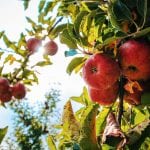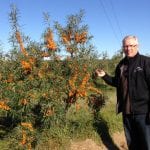Many types of fruit trees won't survive in a very cold climate. But winter hardy apple trees can thrive in Read more


FRUIT TREE CARE NEWSLETTER
Three Steps to Turning Your Backyard into a Food Forest
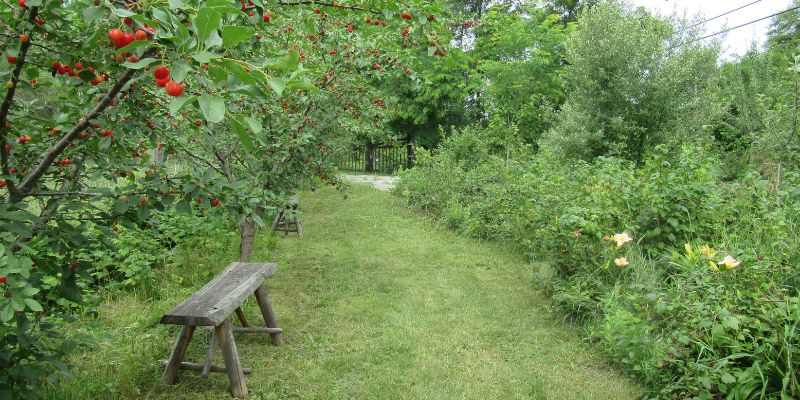
If you enjoy growing your own food, you may have one or two fruit trees in your yard. You might also have lots of grass, a couple of tomato plants, a few daffodils, and a lawn chair or two.
But your backyard has so much more potential than that! In this article we will explore how you can grow more food - even in a small space - by turning your backyard into a food forest. There, your fruit trees with thrive, growing side by side with fruiting shrubs and other edible plants.
In this article you will learn how to :
- Prepare the soil for your backyard food forest
- Choose the right shrubs and trees
- And add a ground cover of edible herbs and perennial vegetables
With a little planning, your small backyard food forest can provide you with fresh fruit and vegetables throughout the growing season. Let's get started!
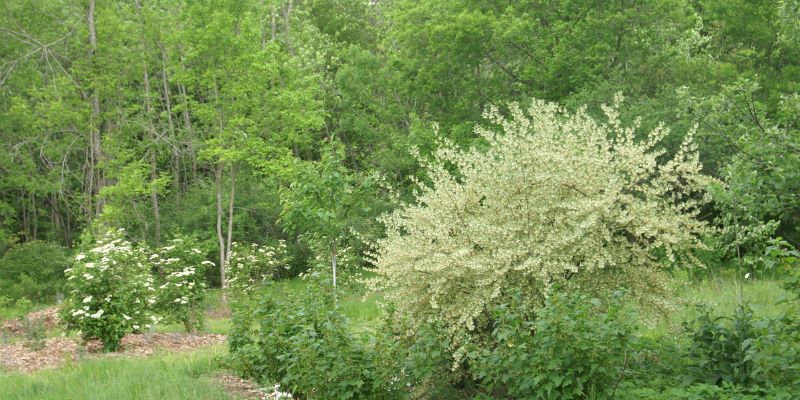
What is a Backyard Food Forest?
A food forest is a garden that is modelled after natural ecosystems found in forests. Food Forests include trees, shrubs, herbs, and other plants that work together to create a self-sustaining system. The goal of a food forest is to produce an abundance of food with minimal effort from the gardener.
Backyard Food forests have become increasingly popular in urban areas and they have many advantages over traditional gardens. Here are a few reasons why:
- You can grow a wide variety of fruits and vegetables in a small backyard food forest.
- Backyard food forests require less water than traditional gardens and they don't rely on fertilizers or pesticides.
- Backyard food forests improve soil health and combat climate change by absorbing carbon dioxide from the atmosphere and storing it in leaves, stems and roots.
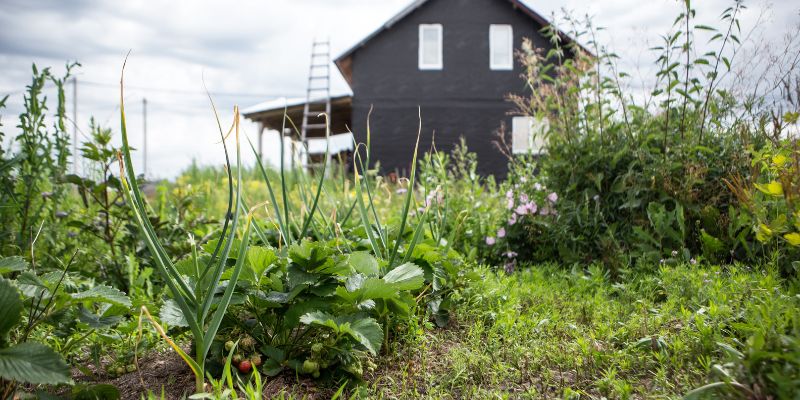
The Challenges of Turning Your backyard into a Food Forest
But there are also some challenges when it comes to turning your backyard into a food forest. The main challenge is related to your location.
Food forests need at least 6 hours of sunlight each day. That's because fruit trees are an important part of any food forest and they need lots of sunshine to thrive. So if you have a shady garden, creating a food forest would not be a good idea.
But if your garden is sunny and bright, it may be a terrific site for a backyard food forest. And if your garden already has existing trees and shrubs that can be integrated into your food forest, you will have a head start!
In an interview on The Urban Forestry Radio Show and Podcast, I interviewed Dani Baker, author of The Home-Scale Forest Garden: How to Plan, Plant and Tend a Resilient Edible Landscape. She shared her suggestions on how to turn your backyard into a food forest in three steps.
Step One: Preparing the Soil with Sheet Mulch
One of the advantages of turning your backyard into a food forest is that once it is established, you won't have to irrigate your plants and trees as frequently. So our first task is to replace water-guzzling turf-grass with a layer of mulch or ground cover.
Mulch and ground cover plants shade the soil and prevent evaporation. In hot weather, they keep plant roots cool. During the winter, they insulate roots and prevent them from freezing. And as they break down, mulch and ground covers decay and release nutrients into the soil.
And so, the first step to creating a backyard food forest is to prepare the soil. Sheet mulching makes this easy.

Sheet mulching involves layering organic materials like cardboard or newspaper on top of the ground. The sheet mulch will smother the grass and weeds below. And over time it will break down and improve soil quality, creating a perfect environment for plants to thrive.
To sheet mulch your garden, you will need:
- A source of water and a garden hose
- A shovel
- Compost or topsoil
- Organic materials (such as cardboard, leaves, straw, and grass clippings)
- Wood chips
To begin, you will need to mow the grass and weeds so that they are as short as possible. Then use the hose to thoroughly wet the area that you will be sheet mulching to prime the soil and prevent the organic materials from blowing away.
Next, lay out two layers of cardboard (remove tape and staples first) on top of the existing grass. Overlap the edges of the cardboard pieces by at least 8 inches (20 cm) to prevent weeds from emerging through any uncovered spaces.
Once your whole garden is covered, wet the cardboard or newspaper and then cover it with a half of an inch of compost (1 cm) or up to two inches of topsoil (5 cm). This layer will enrich the soil below to help it support new plants and trees.
Next, you will add up to 6 inches (15 cm) of additional organic material on top of the topsoil or compost. You can use straw, grass clippings and leaves. Dried leaves are fantastic for this purpose so you can ask neighbours to share their collected autumn leaves with you.
Be sure that the organic materials you use are seed-free to prevent weeds popping up in the future. One way to prevent any sneaky weed seeds from germinating in your new food forest is by topping off your organic material layer with two inches (5 cm) of tree leaves. Those dried leaves will suppress any opportunistic weed seeds that found their way into the lower layers of organic matter.
Once your entire garden is covered, use the hose to wet the area one last time. Then add the last layer of organic matter which will be two inches (5 cm) of wood chips! You can often access them for free from a local arborist.

When you call your local arborist ask for wood chips that come from a deciduous tree. Chips from conifers or black walnut trees contain chemicals that can hinder fruit tree growth so they should not be used. Also ask for chips from a healthy tree. If the chips come from a diseased tree, that pathogen can then spread on your site and that would not be a good thing!
The wood chips will help keep the area moist and prevent the organic materials from blowing away or drying out.
It will take time for these organic materials to break down. In the meantime, you can start working on the next step which is researching and choosing shrubs and trees for your backyard food forest.
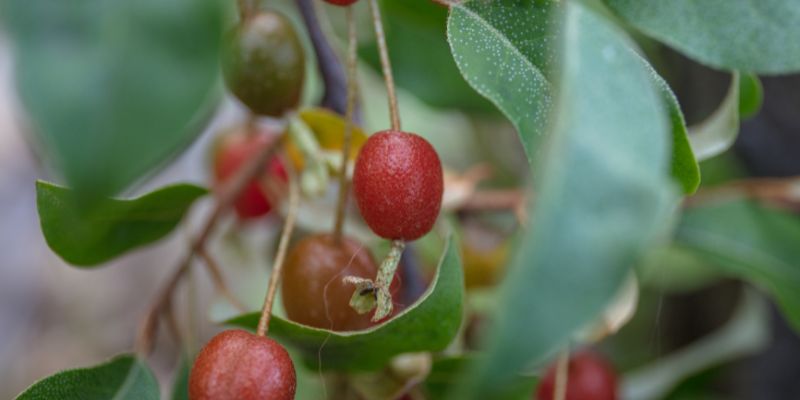
Step Two: Choosing Shrubs and Trees for Your Backyard Food Forest
The next step is to research and choose the other plants that you want to integrate into your small backyard food forest. Your goal is to choose a variety of trees, shrubs, and other plants that will work together to create a self-sustaining system.
You can include fruit trees and fruiting shrubs as well as nitrogen fixing plants and nutrient accumulating plants. Let's start off with the star of the show...fruit trees!

Selecting Fruit Trees for Your Backyard Food Forest
Fruit trees will be a central feature of your food forest. If you already have one or two in your yard, you are ahead of the game. If not, choose fruit trees that will be well adapted to your climate and will successfully cross pollinate. It's also helpful to choose "disease resistant" fruit trees so that you won't have to fight common fruit tree diseases like apple scab, pear rust, or fireblight.
Finally, if your garden is small, you'll want to opt for dwarfing fruit trees rather than full sized trees. This way you will ensure that the trees will not overshadow your entire backyard.
For the best quality trees and the widest selection of cultivars, source your tree from a specialist fruit tree nursery. Be sure to take your time to research your tree. You can learn how to do that in the article Growing Apple Trees the Easy Way or in Orchard People's online course Researching Fruit Trees for Organic Growing Success.

Plant Placement in Your Backyard Food Forest
Once you have chosen your fruit trees, it's time to think about the other plants that you will place around them. When you do that, there are a few things to consider:
- When you buy plants, shrubs and trees they are small. But it's important to know how large they will become when mature. Then place them carefully to ensure that your companion shrubs and trees will not shade your fruit in the years to come.
- Leave mulched pathways on the site. You will need access to your plants so that you can weed around them, harvest and care for them as necessary. Your pathways should be wide enough to accommodate a wheelbarrow or any other necessary equipment.
- Leave room around your fruit trees. Fruit trees need hands on care. So create a wide mulch circle around the tree to ensure that you can prune or harvest the tree without stepping on step on strawberries or other plants!
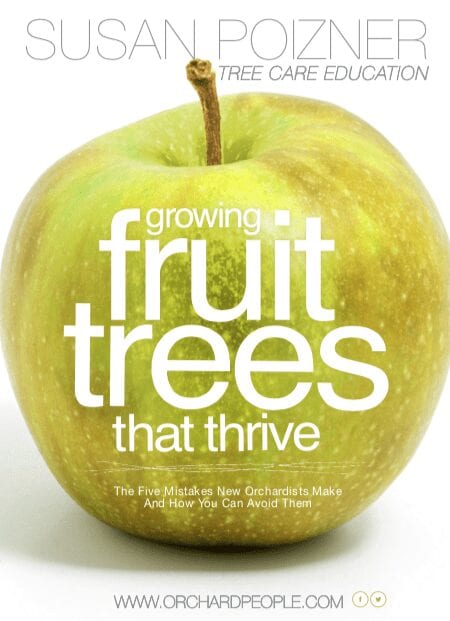
Now, there are different options when choosing plants to integrate into your backyard food forest. The plants that you choose should be one or more of the following:
- Fruiting
- Nitrogen fixing
- Or nutrient accumulating
Let's start with fruiting and food producing shrubs.
Planting Fruiting Trees and Shrubs in Your Food Forest
There are lots of fruiting shrubs that can thrive even if they are partially shaded by fruit trees. These plants include red currants , gooseberries, and blackberries. But there are other choices that are more unusual according to Dani. They include:
- Goumi (this plant is both fruiting and nitrogen fixing)
- Beach plum shrubs
- Honeyberries and goji berries.
Article continued below...
Recommended Reading on Turning Your Backyard into a Food Forest
Planting Nitrogen Fixing Plants and Trees in your Food Forest
Nitrogen fixing plants are plants that have the ability to take nitrogen from the air and convert it into a form of nitrogen that can be released into the soil and used by plants. The nitrogen is released when plants die and they decompose in the soil.
But you don't have to kill a nitrogen fixing shrub or tree in order to enjoy the benefits of free nitrogen fertilizer. Permaculture experts like Stefan Sokowiak of Miracle Farms in Quebec encourage nitrogen fixing shrubs and trees to release accumulated nitrogen into the soil by pruning them annually.
In the video below, Stefan explains that each time a branch is removed, the roots that are associated with that branch die and they will decompose in the soil, releasing excess nitrogen. That nitrogen will then be accessible to nearby fruit trees and other plants.
When it comes to selecting nitrogen fixing plants and trees, there are many to choose from. Some of Dani Baker's favourite nitrogen fixers include Siberian Pea shrub, Sea Buckthorn, and New Jersey Tea Shrub. The latter is a shrub that might be a good option for small gardens.
Nitrogen fixing ground covers include hairy vetch and white clover. You can learn more about nitrogen fixing ground covers in this article and podcast on cover crops.
Planting Nutrient Accumulators in your Backyard Food Forest
Nutrient accumulators are deep rooted plants that pull up mineral nutrients from deep in the soil. When nutrient accumulators die and decompose in the soil, they make those nutrients accessible to shallow rooting plants and trees.
Dani uses plants including Russian comfrey and yarrow as nutrient accumulators, but one of her favourite is the humble dandelion, which has deep roots that break up compacted soil and makes nutrients including potassium, phosphorus, and calcium accessible to other plants.

Once you have a mix of plants and trees that you want to integrate into your backyard food forest, it's time to think about where to place them. When planting, you'll want to start with the larger trees and then fill in with the smaller shrubs and plants. It's important to space your plants correctly so that they have room to grow. You can find lots of plant and spacing recommendations for each plant in Dani's book.

Step Three: Add a Herbaceous Layer
Once you have prepared the soil and carefully selected fruit trees and other fruiting plants to fill the space in your food forest, it's time to consider adding the lower growing herbs and edible perennials.
This allows you to grow more crops in your food forest. But another goal is to support pollinators and beneficial insects. Herbs have tiny flowers that attract beneficial insects including parasitic wasps. These wasps are helpful because they prey on insect pests.
Some of Dani's favourite food forest herbs include lavender, lemon balm, and oregano. Herbs from the onion family including chives also have the added benefit of having a scent that deters and confuses insect pests.
Finally, there are lots of perennial vegetables that can thrive in a food forest including sorrel and chicory. Perennial vegetables are plants that come back year after year. They are a great addition to any garden because they require less work than annual vegetables.

In the following episode of The Urban Forestry Radio Show, my guest Ben Caesar of Fiddlehead Nursery in Ontario who shared his favourite perennial vegetables to grow and he shared a delicous dinner party menu featuring many of his favourite edible perennial plants.
How a Dense Planting of Herbs can Fight Aggressive Weeds
Now you are going to a lot of trouble to transform your backyard into a food forest. And there is nothing more frustrating than having nasty weeds growing into your beautiful backyard from a the neighbours garden next door.
But herbs can also help us here. According to Dani Baker, planting of chives mixed with daylilies that is 24 inches wide (69 cm) can block many of the most aggressive types of spreading weeds. And the bonus is that both of those plants are edible. The chives will be great in your salad or scrambled eggs...and the daylily flowers, buds and young leaves can be eaten raw or cooked.

Backyard Food Forest Mistakes
Inevitably, as you develop your food forest, you will make mistakes. Dani approaches her food forest as a work in progress. She watches to see how the plants coexist. When the plants support each other, she is happy. When things aren't working out, she will remove a plant and try again.
Each site is unique and will have unique needs. But here are a few mistakes that you can avoid right from the start.
- Planting too close together. If you plant your plants and trees too close together they will compete for water and nutrients and they will not thrive.
- Forgetting to create pathways. It's important to create pathways so that you can move around your food forest to carry out important tasks like mulching, pruning, and harvesting.
- Not having access to irrigation. Once a food forest is established, it won't need a lot of extra irritation. But while it is establishing it is essential to irrigate all trees and plants regularly.
- Integrating plants that "Don't play together well." Before choosing your plants, be sure to research their needs to ensure that they are compatible with your site and with neighbouring plants. For instance, blueberries need acidic soil and apple trees thrive in soil with a neutral pH. If your soil is acidic the blueberries will be healthy but the apple tree will suffer. If your soil has a neutral pH, the fruit trees may do well, but the neighbouring blueberries will suffer.
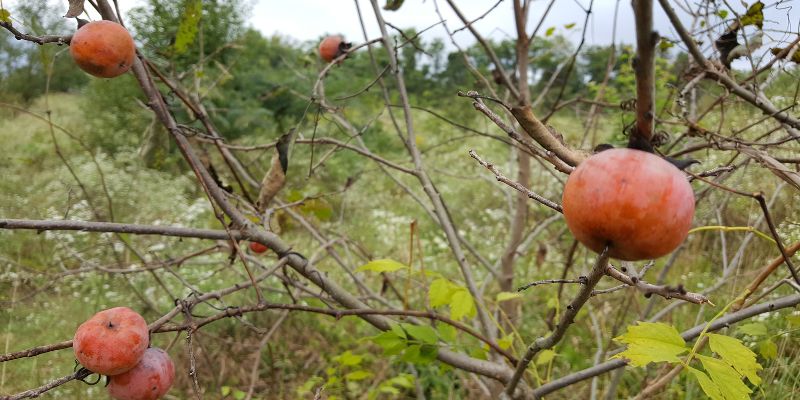
Food Forest Success Comes from Listening to the Landscape
When turning your backyard into a food forest, it's good to take it slow. Prepare the soil and plant a few trees and shrubs, and see how they fare. Over time you can continue to add plants to the site until you have a food forest that is productive, beautiful and easy to care for.
And as your food forest develops, keep a close eye on what the site is telling you. You'll soon see which plants are thriving - and which are not.
Lincoln Smith is an expert in permaculture design. His company Forested US in Maryland designs and installs food forests for both residential and commercial properties. But with over a decade of experience in creating food forests one of Lincoln's biggest lessons was to "listen to the landcape" when choosing food forest plants.
"I have planted and killed many trees along the way," he jokes.
But as the years went on, he took note of which plants thrived and which did not. A few years in, Lincoln noticed lots of wild persimmon trees sprouting up on the property.
To him, the message was clear. These native fruiting plants would fare well on the site. So persimmons became a feature in his food forest. He now grows the tastiest American persimmon varieties alongside other more familiar fruits.
Want to Create a Food Forest? Jump in and Give it a Try
It's true that there is some research to be done if you do want to convert your backyard into a food forest. But there is no need to feel overwhelmed. It's best to transform your backyard slowly and adapt to any issues or problems as you go along.
Dani Baker hopes that her book will help make this transition easier and less frightening for homeowners.
"My goal was to inspire people to try their hand at this," she says. "I hope people will just jump in and do it. You have to do your research but then just make a plan and implement it and observe and enjoy learning from nature," Dani says.
This page may contain affiliate links to books and other products. We may receive a small commission for purchases made through these links at no cost to you. When you use these links you are helping to support OrchardPeople.com's free content! Thank you!

Susan Poizner
Learn more about Susan on the about us page.





